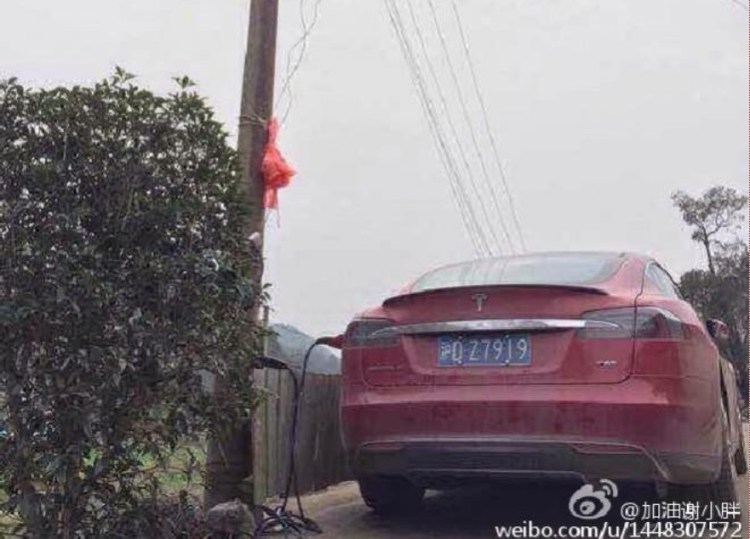It has not been easy going in China thus far for electric-car maker Tesla Motors.
Among the many challenges of selling its cars in that country are a lack of public-charging infrastructure and a Chinese charging standard that differs from any other standard in the world.
Even more challenging, far more affluent Chinese citizens live in apartment buildings than in single-family homes, unlike in the United States.
This may require owners to resort to extreme measures to recharge the battery of a Tesla Model S electric car, especially on longer trips, as a recent photo illustrates.
Published in Car News China last month, the image shows a Chinese-registered Model S being recharged via a precarious system of wires illegally connected into the electric grid.
The photo was taken on a road that leads up a mountain near Chengdu in Sichuan Province, the site says, claiming that the charging is clearly illegal.
Like many areas of the country, this is one without Tesla Superchargers, and presumably no convenient public charging stations either.
The problem of charging-station availability is a serious one for Tesla, according to Gloria Shao, who covers automotive issues in China for Blueshift Research.
Local governments, which have a great deal of power over everyday business transactions in the country, have little incentive to assist Tesla in setting up a proprietary Supercharger network.
As in the States, such a network would be solely for the use of Tesla owners — meaning that drivers of other plug-in electric cars would see no benefit from it.
And with a handful of the most powerful provinces owning shares in auto companies within their borders, giving permission to Tesla to install Superchargers might even be seen as competing with the province’s business interests.
Meanwhile, the very low penetration of plug-in cars to date means there’s little demand for public charging stations as yet.
China defines “new energy vehicles,” which receive a variety of national and provincial incentives, as not only plug-in electric cars but also conventional hybrids, which don’t need to plug in.
Still, Tesla owners are resourceful, as we learned more than five years ago when we ran a story about the Colorado owner of a Tesla Roadster.
While presumably away on a trip, that person had parked next to a conventional 120-volt wall socket at Denver International Airport and was using it to trickle-charge the battery.
When there’s a will, there’s a way.
But, kids, please don’t follow the example of this determined Chinese Tesla owner.
To say his actions are dangerous would be the understatement of the day.
This story originally appeared on Green Car Reports. Copyright 2015


